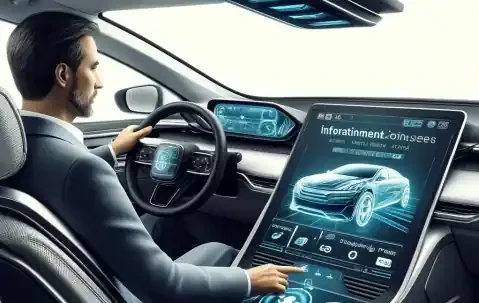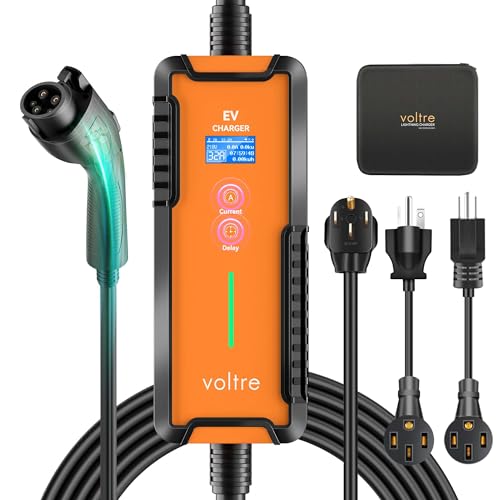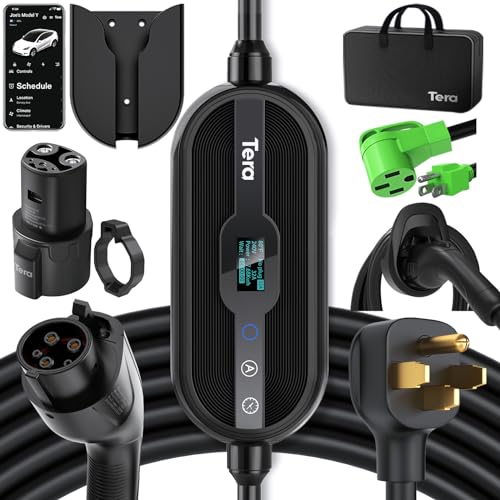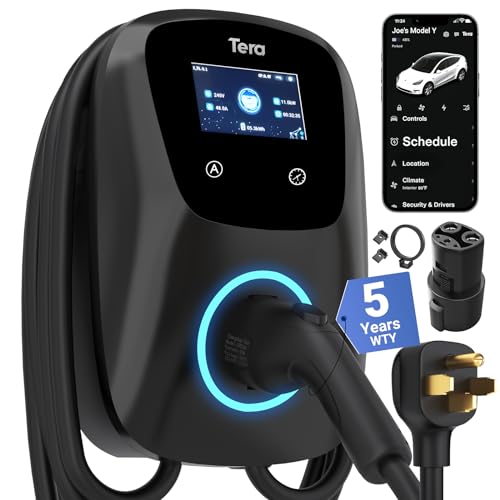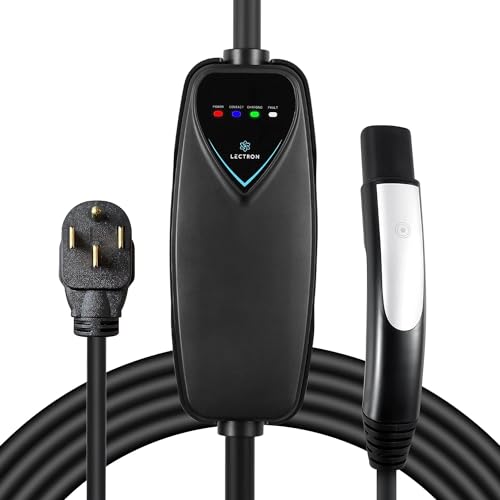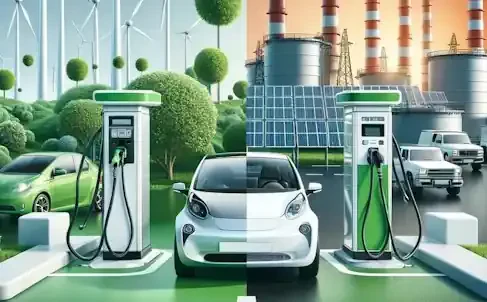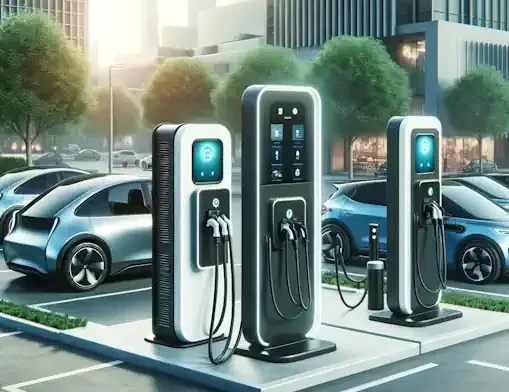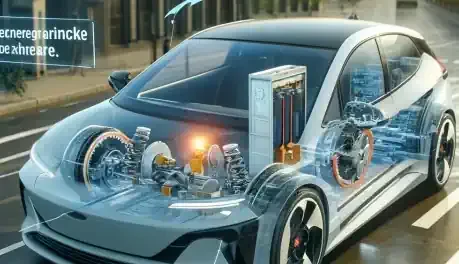Introduction
The automotive industry is undergoing a remarkable transformation with the widespread adoption of electric vehicles (EVs) driven by concerns over climate change, dwindling fossil fuel reserves, and urban air quality. This shift represents not just a change in propulsion technology but a fundamental reimagining of transportation systems worldwide. As EVs become increasingly mainstream, consumers are faced with a plethora of choices, each promising a unique blend of features and capabilities. However, navigating this landscape can be daunting. This article seeks to demystify the process by identifying and exploring the essential features that every prospective EV owner should consider. By delving into aspects such as range, charging infrastructure, safety, and connectivity, we aim to equip readers with the knowledge needed to make informed decisions in an evolving market.
The Emergence of Electric Vehicles
The emergence of electric vehicles represents a paradigm shift in transportation, offering a cleaner, greener alternative to traditional internal combustion engine (ICE) vehicles. With growing concerns about greenhouse gas emissions and their impact on climate change, governments, businesses, and consumers are increasingly turning to electric propulsion as a sustainable solution.
Navigating the EV Market
The proliferation of EV models from established automakers to startups can be overwhelming for consumers. Factors such as battery range, charging infrastructure, performance, and cost-effectiveness vary widely across different models and brands. Therefore, understanding the key features and considerations is essential for making an informed decision when purchasing an EV.
Purpose of the Article
This article aims to serve as a comprehensive guide for prospective EV buyers, outlining the must-have features that define a high-quality electric vehicle. By breaking down each feature and its significance, we seek to empower readers to evaluate EV options effectively and select the model that best aligns with their needs, preferences, and lifestyle.
Long-Range Battery Life
Addressing Range Anxiety
Range anxiety, the fear of running out of battery charge before reaching a destination or charging point, is one of the primary concerns among potential EV buyers. Long-range battery life is crucial for alleviating this anxiety and ensuring that EVs can meet the demands of daily commuting as well as longer trips.
Advancements in Battery Technology
Advancements in battery technology have been instrumental in extending the driving range of electric vehicles. Lithium-ion batteries, the most common type used in EVs, have seen significant improvements in energy density, charging speed, and longevity. Additionally, ongoing research into next-generation battery chemistries, such as solid-state batteries, holds the promise of further enhancing range and performance in the future.
Real-World Range Considerations
While EV manufacturers often advertise impressive range figures, real-world driving conditions can significantly impact actual range. Factors such as driving speed, weather conditions, terrain, and vehicle load can all affect energy consumption. Therefore, it's essential for prospective buyers to consider their typical driving habits and usage patterns when evaluating the range of an EV model.
Future Outlook
As battery technology continues to evolve, we can expect further improvements in range, charging speed, and overall performance of electric vehicles. The development of fast-charging networks and the expansion of infrastructure will also contribute to the broader adoption of EVs, making long-range electric driving increasingly accessible and convenient for consumers.
Fast Charging Capabilities
Convenience of Fast Charging
Fast charging capabilities are essential for minimizing charging times and maximizing convenience, especially during long-distance travel. Unlike traditional charging methods that may require hours to replenish a battery, fast chargers can provide a significant boost in range in a matter of minutes, allowing EV drivers to get back on the road quickly.
Types of Fast Charging Standards
Several fast charging standards exist in the EV market, each with its own specifications and compatibility requirements. Common standards include CCS (Combined Charging System), CHAdeMO, and Tesla's proprietary Supercharger network. The availability of these charging standards may vary depending on the region and the EV model, so it's important for buyers to consider compatibility when selecting a vehicle.
Infrastructure Expansion
The expansion of fast-charging infrastructure is critical for the widespread adoption of electric vehicles. Governments, utilities, and private companies are investing heavily in the deployment of charging networks along highways, major travel routes, and urban centers. This infrastructure expansion aims to address range anxiety and provide EV drivers with convenient access to charging facilities wherever they go.
Charging Speed vs. Battery Health
While fast charging offers the convenience of rapid replenishment, frequent use of high-power chargers may impact battery health over time. EV manufacturers implement various strategies, such as temperature management systems and adaptive charging algorithms, to mitigate potential degradation caused by fast charging. Buyers should consider the balance between charging speed and long-term battery health when utilizing fast-charging capabilities.
User-Friendly Infotainment System
Central Role in the Driving Experience
An intuitive and feature-rich infotainment system is integral to the modern driving experience, offering entertainment, navigation, connectivity, and vehicle control functionalities in a centralized interface. In electric vehicles, the infotainment system plays an even more critical role by providing insights into energy consumption, charging status, and range estimation, thereby empowering drivers to make informed decisions about their driving behavior.
Evolution of Infotainment Technology
Infotainment systems in EVs have evolved rapidly, transitioning from basic displays to sophisticated multimedia platforms with advanced features. Touchscreen interfaces, voice recognition, gesture controls, and smartphone integration are now standard features in many electric vehicles, offering users a seamless and intuitive interaction experience.
Integration of EV-Specific Features
Beyond traditional infotainment functionalities, EV-specific features are integrated into modern infotainment systems to cater to the unique needs of electric vehicle owners. These features may include energy monitoring displays, charging station locators, real-time range estimation, and remote vehicle management via dedicated mobile apps. Such integration enhances the utility and value of the infotainment system, making it an indispensable tool for EV drivers.
Personalization and Customization
Customization options allow users to tailor the infotainment experience to their preferences, adjusting settings for display layouts, color schemes, audio profiles, and navigation preferences. Personalization features enhance user satisfaction and usability, ensuring that the infotainment system aligns with the individual needs and preferences of each driver.
Enhanced Safety Features
Prioritizing Safety in EV Design
Safety is a paramount concern in electric vehicles, with manufacturers implementing advanced safety features to protect occupants and pedestrians. Beyond meeting regulatory requirements, EVs incorporate innovative technologies to enhance crashworthiness, accident avoidance, and pedestrian protection, ensuring a high level of safety for all road users.
Active Safety Systems
Electric vehicles are equipped with a range of active safety systems, such as forward collision warning, automatic emergency braking, lane-keeping assist, and adaptive cruise control, which help prevent accidents and mitigate the severity of collisions. These systems utilize sensors, cameras, and radar to monitor the vehicle's surroundings and provide timely alerts and interventions to assist the driver.
Passive Safety Features
In addition to active safety systems, EVs incorporate passive safety features designed to protect occupants in the event of a collision. Structural enhancements, such as reinforced battery enclosures, crumple zones, and advanced airbag systems, help absorb and dissipate energy during a crash, minimizing the risk of injury to occupants.
Pedestrian Safety Measures
Electric vehicles address pedestrian safety concerns with features such as pedestrian detection systems and external sound generators that emit audible alerts to warn pedestrians of the vehicle's presence, particularly at low speeds. These measures help mitigate the risk of accidents involving pedestrians, contributing to safer road environments for all road users.
Regenerative Braking System
Maximizing Energy Efficiency
The regenerative braking system is a hallmark feature of electric vehicles, allowing them to convert kinetic energy generated during braking and deceleration into electrical energy, which is then stored in the vehicle's battery for later use. By harnessing this otherwise wasted energy, regenerative braking enhances energy efficiency and extends the vehicle's driving range, making it a key component of the overall sustainability of electric propulsion.
Seamless Driving Experience
Regenerative braking systems contribute to a smoother and more controlled driving experience, particularly in stop-and-go traffic conditions. Unlike traditional friction brakes, which dissipate braking energy as heat, regenerative braking provides a more gradual and predictable deceleration, enhancing vehicle stability and control while reducing wear and tear on brake components.
Adjustable Regenerative Braking Levels
Many electric vehicles offer adjustable regenerative braking levels, allowing drivers to customize the braking feel and energy regeneration to suit their preferences. Higher regenerative braking settings increase energy recovery during deceleration, while lower settings mimic the coasting feel of traditional ICE vehicles. This flexibility empowers drivers to optimize energy usage and driving dynamics based on driving conditions and personal preferences.
Evaluating Regenerative Braking Efficiency
When evaluating electric vehicles, prospective buyers should consider the efficiency and effectiveness of the regenerative braking system. Factors such as braking force, regenerative braking response, and seamless integration with traditional friction brakes impact the overall driving dynamics and energy recovery efficiency of the vehicle. A well-tuned regenerative braking system enhances energy regeneration while maintaining a natural and intuitive driving experience.
Over-the-Air Software Updates
Continuous Improvement and Innovation
Over-the-air (OTA) software updates enable electric vehicle manufacturers to deliver remote updates to vehicle software and firmware, providing consumers with access to new features, performance enhancements, and bug fixes without the need for physical service appointments. This seamless update process ensures that EVs remain up-to-date with the latest advancements in technology and functionality, enhancing the ownership experience and prolonging the vehicle's lifespan.
Enhanced Convenience and Accessibility
OTA updates offer unparalleled convenience and accessibility, allowing users to receive and install updates wirelessly, typically via a Wi-Fi or cellular connection. This eliminates the need for manual intervention or visits to the dealership, saving time and hassle for vehicle owners. Additionally, OTA updates can be scheduled to occur during off-peak hours or when the vehicle is not in use, minimizing disruption to daily routines.
Security and Reliability Considerations
While OTA updates offer numerous benefits, ensuring the security and reliability of the update process is paramount. Manufacturers implement robust encryption protocols and authentication mechanisms to protect against unauthorized access and tampering. Additionally, thorough testing and validation procedures are conducted to verify the integrity and compatibility of software updates before they are deployed to vehicles, minimizing the risk of issues or malfunctions.
Future Potential and Expansion
As the automotive industry continues to embrace digitalization and connectivity, the role of OTA updates in electric vehicles is poised to expand further. Future advancements may include predictive maintenance capabilities, dynamic feature upgrades, and enhanced cybersecurity measures, further enhancing the value proposition of electric vehicles and cementing their position as the vehicles of the future.
Comfortable and Spacious Interior
Importance of Interior Comfort
The interior of an electric vehicle serves as a sanctuary for occupants, providing comfort, convenience, and connectivity during journeys. With the absence of a traditional internal combustion engine, EVs often offer spacious and versatile interiors that prioritize passenger comfort and well-being. A comfortable and inviting cabin environment enhances the overall driving experience, making long trips more enjoyable and relaxing for occupants.
Ergonomic Design and Materials
Modern electric vehicles feature ergonomic design principles and high-quality materials to create a welcoming and luxurious interior ambiance. Soft-touch surfaces, premium upholstery options, and sustainable materials such as recycled plastics and eco-friendly fabrics contribute to a premium look and feel while minimizing environmental impact. Additionally, thoughtful design elements such as adjustable seating positions, ample legroom, and panoramic sunroofs enhance passenger comfort and satisfaction.
Quiet and Serene Driving Experience
Electric propulsion systems offer a quiet and serene driving experience compared to traditional ICE vehicles, with minimal noise, vibration, and harshness (NVH) levels. This tranquil environment allows occupants to enjoy conversations, music, or simply the peace and quiet of the journey without distractions. Sound-deadening materials and acoustic insulation further enhance cabin comfort by reducing external noise intrusion, ensuring a relaxing and stress-free ride for passengers.
Versatile Seating and Cargo Configurations
Electric vehicles often feature versatile seating and cargo configurations to accommodate varying passenger and cargo needs. Fold-flat rear seats, adjustable cargo floors, and modular storage solutions maximize interior space and flexibility, allowing users to transport bulky items or configure the cabin to suit their lifestyle. Whether it's a family road trip, grocery run, or outdoor adventure, electric vehicles offer the versatility to adapt to diverse transportation requirements with ease.
Integration with Smart Home and Grid
Seamless Connectivity and Integration
Electric vehicles have the potential to integrate seamlessly with smart home systems and the electric grid, enabling users to optimize energy usage, maximize convenience, and reduce operating costs. By leveraging internet connectivity and data analytics, EVs can communicate with home energy management systems, renewable energy sources, and utility providers to coordinate charging schedules, monitor energy consumption, and participate in demand response programs.
Vehicle-to-Grid (V2G) Technology
Vehicle-to-grid (V2G) technology allows electric vehicles to serve as mobile energy storage units, capable of supplying electricity back to the grid during peak demand periods or emergency situations. This bidirectional energy flow not only helps balance supply and demand on the grid but also enables EV owners to monetize their vehicle's battery capacity by selling surplus energy back to utility companies or participating in grid stabilization programs.
Intelligent Charging Solutions
Intelligent charging solutions enable users to optimize charging schedules based on electricity prices, grid demand, and renewable energy availability. Smart charging algorithms can dynamically adjust charging rates and schedules to take advantage of off-peak electricity rates, minimize grid congestion, and maximize the use of renewable energy sources such as solar and wind power. This ensures cost-effective and environmentally friendly charging while reducing strain on the grid during peak demand periods.
Future Innovations and Integration
As electric mobility evolves, the integration of EVs with smart home and grid technologies will continue to advance, unlocking new opportunities for energy optimization, grid resilience, and sustainable transportation. Future innovations may include vehicle-to-home (V2H) systems, energy trading platforms, and blockchain-based transactions, further blurring the lines between transportation, energy, and digitalization in the quest for a smarter, greener future.
Conclusion Must Have Electric Vehicle Features
The transition to electric vehicles heralds a new era of mobility characterized by sustainability, innovation, and connectivity. As consumers embrace the benefits of electric propulsion, the demand for EVs continues to soar, driving unprecedented advancements in technology and design. In this evolving landscape, the importance of selecting the right features cannot be overstated. From long-range battery life and fast charging capabilities to user-friendly infotainment systems and integration with smart technologies, each feature plays a crucial role in shaping the EV ownership experience.
By prioritizing these essential features, prospective EV buyers can navigate the market with confidence, selecting a model that meets their needs, preferences, and lifestyle. Whether it's maximizing range for long-distance travel, optimizing charging convenience with fast charging infrastructure, or enjoying the comfort and connectivity of a well-appointed interior, electric vehicles offer a compelling proposition for drivers seeking a sustainable and enjoyable driving experience.
As the electric vehicle market continues to evolve, fueled by technological innovation and consumer demand, the future looks brighter than ever. With ongoing advancements in battery technology, charging infrastructure, and smart connectivity, electric vehicles are poised to revolutionize the way we think about transportation, ushering in a cleaner, greener, and more sustainable future for generations to come.
In conclusion, the journey towards electric mobility represents not just a shift in transportation but a collective commitment to shaping a more sustainable and resilient world. By embracing electric vehicles and the essential features they embody, we can drive positive change and pave the way towards a brighter tomorrow for our planet and future generations.
